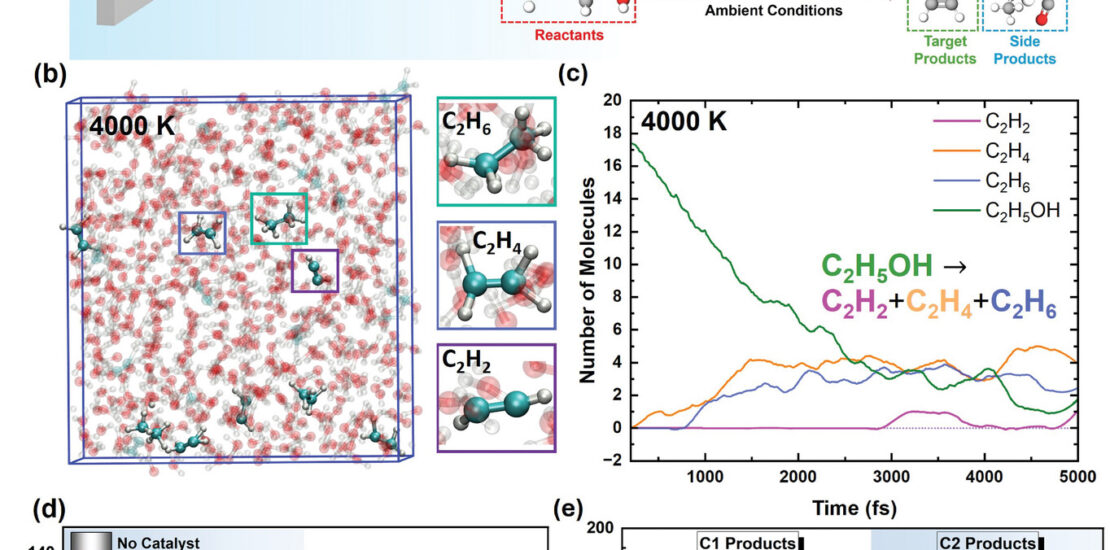- 11 February 2025
- Posted by: nemcatgroup
- Category: Publications

The catalytic conversion of bioethanol to ethylene (C2H4) and acetylene (C2H2) offers a transformative approach to sustainable production of two industrial cornerstones for organic compound and polymer syntheses, thereby offering significant economic and environmental advantages. In contrast, current methods for the synthesis of these C2 hydrocarbons rely on energy- and carbon-intensive processes that require high temperatures and pressures. The present work addresses these limitations with a novel, low-energy, bioethanol-conversion strategy operating at room temperature and ambient pressure using sono-piezo-photocatalysts. A novel heterostructure of graphene oxide fragments (GO) and sodium bismuth titanate (NBT) within a core-shell microstructure achieved outstanding C2H4 and C2H2 production rates of 134.1 and 55.5 µmol/g/h, respectively. The conversion mechanism is driven by (1) bubble collapse during ultrasound irradiation, generating localized high temperatures (≈4000 K) and pressures (≈100 MPa), and (2) piezo-photocatalytic tuning of GO/NBT by enhanced charge separation and transfer. DFT simulations revealed detailed sono-piezo-photocatalytic conversion pathways, showing significant reductions in energy barriers for C2H4 (22.0 kcal mol−1) and C2H2 (48.0 kcal mol−1) formation. These findings emphasize the critical role of the catalyst in cleaving both C─H and C─O bonds effectively, leading to the desired product formation.
